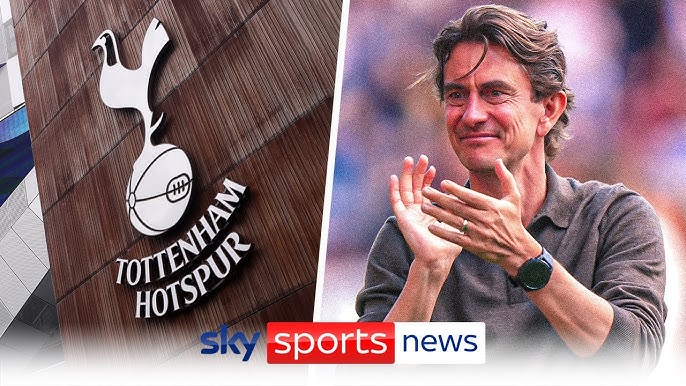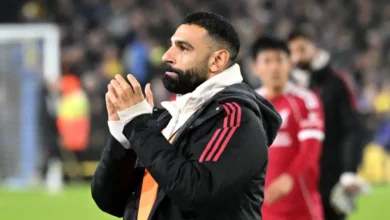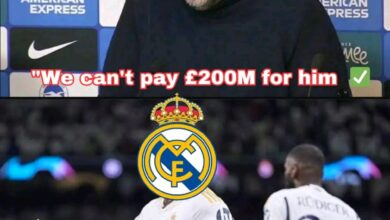The Morgan Gibbs-White Transfer Saga: A Battle of Contracts, Clauses, and Club Politics

The summer transfer window of 2025 has produced its fair share of drama, but few sagas have captured the intrigue and controversy quite like the Morgan Gibbs-White situation. What began as a seemingly straightforward transfer pursuit has evolved into a complex legal battle that threatens to reshape how clubs approach player recruitment and contract negotiations in modern football.
At the heart of this unfolding drama lies a 25-year-old England international whose talent has become the subject of intense scrutiny, not just for his abilities on the pitch, but for the contractual complications that surround his potential move from Nottingham Forest to Tottenham Hotspur. The case has exposed the delicate balance between player ambition, club loyalty, and the increasingly complex world of modern football transfers.
The Morgan Gibbs-White transfer saga began to take shape last week when Tottenham Hotspur made what appeared to be a routine approach for the midfielder. However, what should have been a standard negotiation quickly descended into accusations of impropriety and threats of legal action that have sent shockwaves through the football world.
Nottingham Forest’s response to Tottenham’s interest was swift and decisive. The club has written to both Tottenham Hotspur and Gibbs-White’s agent, threatening them with legal action over what they claim to have been an illegal transfer approach. The accusations center around Forest’s belief that confidential information regarding the player’s contract was improperly accessed and utilized.
The controversy specifically relates to the £60 million release clause embedded within Gibbs-White’s contract at the City Ground. Forest’s legal team argues that an illegal approach was made, with particular emphasis on their claim that the confidential nature of the release clause was breached. Their evidence? Tottenham’s bid was submitted for the exact amount required to trigger the clause—a precision that Forest believes could only have been achieved through improper means.
This accusation strikes at the heart of modern football’s transfer ecosystem. Release clauses, while common in contemporary contracts, are often treated as confidential information shared only between the player, their representatives, and the club. The suggestion that this confidentiality was breached raises serious questions about the integrity of the transfer process and the methods clubs employ to gather intelligence on potential targets.
For Morgan Gibbs-White, the situation represents a career-defining moment fraught with complications. The 25-year-old midfielder, who has established himself as one of the Premier League’s most promising talents, finds himself caught between his current club’s legal maneuvering and his apparent desire to join Tottenham.
Reports suggest that Gibbs-White is understood to only want to sign for Spurs, a position that puts him in direct conflict with his current employers. This unwavering preference for Tottenham adds another layer of complexity to an already intricate situation. The player’s stance demonstrates the power shift that has occurred in modern football, where players increasingly assert their preferences in transfer negotiations.
The midfielder’s position at Nottingham Forest has been complicated by the club’s repeated attempts to secure him on a longer contract with an increased release clause. These efforts, which have reportedly been ongoing for months, have met with resistance from the player’s camp. The failure to agree on new terms has created the current impasse, where Forest find themselves potentially losing a key asset while simultaneously fighting to maintain their negotiating position.
Gibbs-White’s international status adds weight to his transfer value and desirability. As an England international, his profile extends beyond domestic football, making him an attractive proposition for clubs seeking to enhance their squad quality and commercial appeal. His age—at 25, he represents the perfect blend of experience and potential—makes him an ideal target for clubs looking to build for both immediate success and long-term sustainability.
Nottingham Forest’s handling of the situation reveals the complex challenges facing modern football clubs in player retention. The club’s decision to pursue legal action represents a high-stakes gamble that could have far-reaching consequences for their relationship with both the player and the broader football community.
The threat of legal action serves multiple purposes from Forest’s perspective. Firstly, it demonstrates their determination to protect what they view as their contractual rights and confidential information. The club’s position is that they have been wronged by improper conduct and deserve both compensation and protection from future similar incidents.
Secondly, the legal threats may serve as a deterrent to other clubs considering similar approaches. If Forest can establish a precedent that improper access to confidential contract information will result in legal consequences, it could influence how future transfer negotiations are conducted across the football industry.
However, Forest’s strategy also carries significant risks. The public nature of their legal threats and the allegations they have made could damage relationships with other clubs and agents. The football world is relatively small, and reputations for being difficult to deal with can have long-lasting consequences for a club’s ability to conduct future business.
Moreover, the legal action may ultimately prove counterproductive in their relationship with Gibbs-White. The player’s reported preference for joining Tottenham, combined with the public nature of the dispute, could create an irreparable rift between player and club. Even if Forest succeeds in preventing the transfer, they may find themselves with a disgruntled player whose commitment to the club has been fundamentally compromised.
For Tottenham Hotspur, the Gibbs-White pursuit represents both an opportunity and a significant risk. The club’s willingness to trigger the release clause demonstrates their belief in the player’s ability to enhance their squad, but the legal complications that have emerged threaten to overshadow the sporting aspects of the transfer.
Spurs’ approach to the transfer reveals their sophisticated understanding of the modern transfer market. The decision to submit a bid for the exact amount of the release clause, while controversial, demonstrates efficient negotiation tactics. Release clauses are designed to provide certainty in transfer negotiations, and Tottenham’s approach simply utilized the mechanism as intended.
The club’s continued optimism about completing the deal, despite the legal threats, suggests they believe their conduct has been above board. This confidence may be based on legal advice that their approach was conducted within the proper parameters of football’s regulatory framework. However, the uncertainty created by Forest’s legal threats adds complexity to what should have been a straightforward transaction.
Tottenham’s interest in Gibbs-White also reflects their broader transfer strategy under current management. The club has shown a preference for acquiring talented players in their prime years, capable of making immediate impacts while retaining resale value. Gibbs-White fits this profile perfectly, offering the technical ability and physicality that could enhance Spurs’ midfield options.
The involvement of former Tottenham player Jamie O’Hara in the controversy adds another dimension to the saga. O’Hara’s strong words regarding the situation and his advice to Gibbs-White represent the emotional investment that former players maintain in their clubs’ affairs.
O’Hara’s suggestion that Gibbs-White should “go to the PFA, sue Nottingham Forest, and refuse to train” reflects the frustration felt by many observers who view Forest’s actions as unreasonable obstruction. His characterization of being “disgusted” by the situation demonstrates the strong emotions that high-profile transfers can generate among supporters and former players.
The former midfielder’s advice to involve the Professional Footballers’ Association (PFA) is particularly significant. The PFA serves as the players’ union and has historically played important roles in resolving disputes between players and clubs. O’Hara’s suggestion that Gibbs-White should seek their support implies that he views the situation as potentially involving restraint of trade or other issues that could warrant union intervention.
The recommendation that Gibbs-White should refuse to train represents the most extreme suggestion in O’Hara’s advice. Such action would escalate the conflict significantly and could have serious consequences for both player and club. While players have occasionally used training boycotts as leverage in transfer disputes, such tactics are risky and can damage relationships permanently.
The legal dimensions of the Gibbs-White case could have far-reaching implications for how football transfers are conducted in the future. Forest’s allegations of improper conduct, if proven, could establish new standards for how clubs gather information about potential transfer targets.
The question of contract confidentiality lies at the heart of the legal dispute. While release clauses are common in modern football contracts, the extent to which their specific details should remain confidential is not always clear. Different legal jurisdictions may have varying interpretations of what constitutes proper and improper access to such information.
The case also raises questions about the role of agents and intermediaries in transfer negotiations. Football agents often possess detailed knowledge of multiple players’ contractual situations, and the line between legitimate market intelligence and improper disclosure can be difficult to define. The outcome of this case could influence how agents manage confidential information in future negotiations.
Furthermore, the dispute highlights the potential for conflicts between different aspects of football’s regulatory framework. While release clauses are designed to provide certainty and facilitate player movement, they can also create situations where clubs feel their interests are unfairly compromised. The balance between player mobility and club protection remains a delicate issue in modern football governance.
The Gibbs-White saga unfolds against the backdrop of an increasingly complex transfer market where clubs must navigate multiple competing interests and regulatory requirements. The case illustrates how individual transfer disputes can expose broader systemic issues within football’s governance structures.
The timing of the dispute, occurring during the peak of the summer transfer window, adds urgency to the situation. Transfer windows create artificial deadlines that can pressure all parties to reach quick resolutions, but they can also exacerbate conflicts when disagreements arise. The compressed timeframe for completing transfers can make legal disputes particularly disruptive.
The case also reflects the growing importance of release clauses in modern football contracts. These mechanisms, while designed to provide clarity and facilitate transfers, can create their own complications when disputes arise about their proper application. The Gibbs-White situation may influence how clubs structure future contracts and the safeguards they implement to protect confidential information
The £60 million release clause at the center of the dispute represents a significant financial commitment that extends beyond the immediate transfer fee. For Tottenham, the investment in Gibbs-White would represent a substantial portion of their transfer budget and a clear statement of their belief in his potential contribution to the squad.
The financial implications also extend to the potential costs of legal action. Should Forest pursue their threatened legal action, both clubs could face significant legal expenses regardless of the outcome. These costs, while potentially small compared to the transfer fee, represent additional complications in an already complex situation.
For Gibbs-White personally, the uncertainty surrounding his future could have financial implications beyond the immediate transfer. Players often receive loyalty bonuses and other benefits from their current clubs, and the acrimonious nature of the current dispute could affect these arrangements. Additionally, the delay in resolving his situation could impact his preparation for the upcoming season.
As the saga continues to unfold, several potential resolutions remain possible. The most straightforward outcome would be a negotiated settlement that allows the transfer to proceed while addressing Forest’s concerns about their contractual rights and confidential information.
Alternative resolutions might involve arbitration through football’s governing bodies or the legal system. The Football Association, Premier League, or FIFA could potentially intervene to resolve the dispute through their established procedures for transfer-related conflicts. Such intervention would provide a framework for resolution while potentially establishing precedents for future similar situations.
The possibility also remains that the legal complications could prevent the transfer from proceeding entirely. If Forest’s legal action proves successful or creates sufficient uncertainty, Tottenham might choose to withdraw their interest and pursue alternative targets. Such an outcome would leave all parties in difficult positions, with Forest retaining a potentially disgruntled player and Tottenham forced to revise their transfer plans.
The Morgan Gibbs-White transfer saga represents more than just a dispute over a single player’s future. It encapsulates the tensions and complexities that characterize modern football transfers, where sporting ambitions intersect with legal rights, contractual obligations, and commercial interests.
The case highlights the evolving nature of the relationship between players, clubs, and the regulatory framework that governs football transfers. As the sport continues to grow in commercial importance and global reach, these relationships will likely face increasing scrutiny and regulation.
For the immediate participants—Gibbs-White, Nottingham Forest, and Tottenham Hotspur—the resolution of this dispute will have lasting consequences. The way the situation is resolved will influence not only the player’s career trajectory but also the reputation and future negotiating positions of both clubs.
The broader football community will be watching closely as this saga unfolds, understanding that the precedents established could influence how similar situations are handled in the future. The balance between player mobility, club rights, and market efficiency remains a central challenge in modern football governance.
As the summer transfer window continues, the Morgan Gibbs-White case serves as a reminder that even seemingly straightforward transfers can become complex legal and political battles. The resolution of this dispute will likely be remembered as a defining moment in the evolution of football’s transfer system, illustrating both the opportunities and the pitfalls that characterize the modern game.
Whether Gibbs-White ultimately joins Tottenham, remains at Nottingham Forest, or finds himself in an entirely different situation, his case will have contributed to the ongoing conversation about player rights, club obligations, and the future of football transfers. The saga continues to unfold, with each development adding new layers to an already complex and fascinating story.















